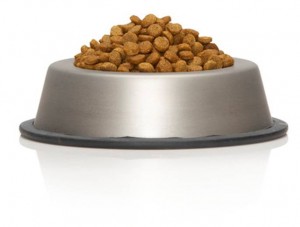 Fat has an undeservedly bad reputation among pet owners since it is seen as the main contributor in obesity and its many health issues. Just as in humans, fat is an important macronutrient in a dog’s diet, and too little of it results in health problems just as too much of it leads to obesity. The trick then is to know the right balance so that your dog will get proper nutrition where fat is concerned.
Fat has an undeservedly bad reputation among pet owners since it is seen as the main contributor in obesity and its many health issues. Just as in humans, fat is an important macronutrient in a dog’s diet, and too little of it results in health problems just as too much of it leads to obesity. The trick then is to know the right balance so that your dog will get proper nutrition where fat is concerned.
Functions of Fat
Let’s first discuss the importance of fat in the maintenance of proper health in canines. As a macronutrient, fat is a highly concentrated form of energy with a capacity to supply nearly as much energy as protein and carbohydrates combined. Other important functions of fat include improving the texture and palatability of the dog food, as well as carrying fat-soluble vitamins.
The final result is a healthier body for the dog by fostering an improved appetite, higher levels of energy and a shinier coat. Therefore, eliminating fat altogether or greatly decreasing it from a dog’s diet can likely lead to an early death.
Sources of Fat
Now that the importance of fat has been established, the next issue is the sources of good fat. Most commercial dog foods have varying amounts of good fat with the most common sources being tallow, lard, cottonseed oil, poultry fat and hydrogenated vegetable oils. Veterinarians do not recommend fish oil and hydrogenated coconut oil to be fed to dogs mainly because of their non-digestibility. In contrast, the fat content in commercial dog food is 90% digestible.
Requirements of Fat
Unfortunately, many commercial dog food products contain too much or too little of the required amount of fat for dogs. Most of these animal products may even have higher-than-required amounts of fat because the manufacturers want to improve on the palatability of the dog food.
The outcome is obvious: A dog that can potentially end up overeating due to the palatability, which may encourage a dog owner to continue purchasing the dog food. Sadly, the effect can be harmful in the long run with a dog slowly, but inevitably, becoming obese as time passes.
So, what are the requirements for fat in a dog’s daily diet? The answer depends on the age, physical condition and energy demands of the dog with the fat requirement range in percentage of total diet are as follows:
- Puppies: 8 to 17 percent
- Adult Dogs: 5 to 15 percent
- Performance Dog: 8 to 20 percent
- Racing Sled Dog: 50 percent
- Lactating Dog: 8 to 17 percent
Too little fat and your dog will suffer from impaired reproduction, slower wound healing, drier coat and scaly skin, higher risks for skin infections and other growth deformities. Too much fat and your pet will suffer from obesity and pancreatitis along with other complications.
You can avoid inflicting these aggravations on your dog by asking the veterinarian about the proper diet with the right fat content. Your pet will then be able to reap the benefits of having fat in his body and you can avoid the expenses that are associated with treating dog obesity.
Content written by Philip Harris of www.ohmydogsupplies.com, look for current discounts on car seat covers for dogs online.



Follow Us!
By PDGACO GaballaLoans